If you’re looking to create a gorgeous garden oasis, one of the most important elements is choosing the right flowers. But, with so many options, which bloom is best? Today we explore gardenias versus camellias — both stunning plants in their own right — to find out which is better for your garden. With this guide, you can make an informed decision and enjoy the beauty of either plant in your favorite outdoor space.
Key Differences Between Gardenia vs Camellia
When it comes to choosing between gardenia and camellia, the decision can be tough. Both plants boast loads of benefits, but there are some key differences that can make all the difference when deciding which one is best for your garden. Here’s a quick look at the key differences between gardenia vs camellia:
- Appearance – Gardenias have waxy white flowers with glossy green foliage, while camellias have large showy blooms in shades of pink, red or white and their leaves are dark green and glossy.
- Climate – Gardenias prefer warm climates whereas camellias can tolerate colder temperatures.
- Bloom Time – Gardenias typically bloom in the summer months, while camellias can bloom at any time of year.
- Pruning – Gardenias require frequent pruning to keep them looking their best, whereas camellias only need occasional trimming.
- Care Requirements – Gardenias are quite sensitive and require lots of attention and care, while camellias are more resilient and don’t need as much maintenance.
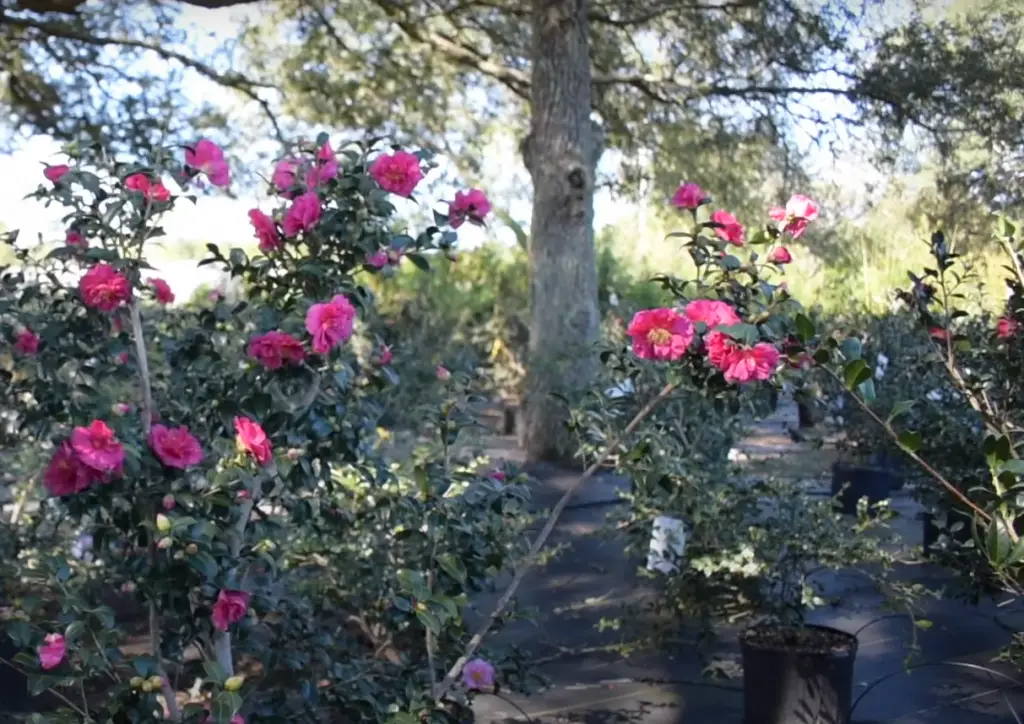
Taking all these things into account should help you decide which one is best for your garden – gardenia or camellia. Whichever one you choose, both will bring beauty and vibrancy to your outdoor space! Happy gardening!
Classification
Gardenia and camellia can both be classified as flowering shrubs. Gardenias are part of the Rubiaceae family, while camellias belong to the Theaceae family. Gardenias require warm climates and full sun whereas camellias prefer light shade and cool temperatures.
Description
Gardenias are beautiful, fragrant shrubs that produce white or creamy-white waxy blooms with a delightful scent. Gardenias can reach heights of up to 8 feet and typically bloom in the summer months.
The leaves of gardenia plants are glossy green whereas camellia foliage is dark green and glossy.Uses
Gardenias and camellias are both popular choices for landscaping or as decorative plants in the home. Gardenias can be planted near windows or patios to enjoy their fragrant blooms, while camellias make excellent hedges and borders. Both plants can be used in containers and make beautiful cut flowers.
Origin
Gardenias originated in Asia and have been cultivated for hundreds of years. They are now widely grown around the world, from South America to Europe. Camellias also originated in Asia but have since spread across the globe, with species native to North America, Africa and Australia as well.
Growing Preferences
Gardenias and camellias have different preferences when it comes to growing conditions. Gardenia plants thrive in warm, humid climates, making them suitable for warmer parts of the country. They prefer acid soils with a pH level between 6 and 6.5, along with plenty of organic matter. When planted outside, gardenias need full sun or partial shade depending on the variety you choose and should be watered regularly during the summer months.

On the other hand, Camellias are more tolerant of colder temperatures and can even survive frosty winters if given adequate protection from wind and exposure to direct sunlight.
When planted outside, camellias require partial shade and should have their roots kept evenly moist throughout the season. [1]Camellia and Gardenia blooming is different
Camellia plants bloom in early spring while Gardenias usually peak in late spring or early summer. Some varieties, however, are capable of blooming twice during the year. It’s worth noting that Camellia flowers can last up to three months if properly cared for. Gardenia blossoms tend to be more delicate and have a shorter lifespan of about two weeks.
Camellia has a more exciting flower’s shape
When you compare the flowers of Gardenia and Camellia, there is a major difference. Gardenias have white blossoms with a very smell, while Camellias tend to be more colorful and interesting in terms of shape. The blooms of Camellia are usually pink or red, and they can come in many different shapes such as single petals, double petals, ruffled edges, open centers and so on. This makes them quite appealing for landscaping purposes since their diversity gives you plenty of options to choose from. On top of that, the foliage of Camellia looks lush and vibrant during the growing season which adds even more beauty to your garden.
Camellia has a wider range of colors
If you’re looking to spruce up your garden with a wide range of colors, sizes, and shapes, Camellia might be the better choice for you. With this bush or tree-like plant, you can mix and match different varieties to create an eye-catching display that is perfect for any landscape. The blooms come in shades ranging from white to yellow to orange and even pink! You can also find different sizes of flowers that range from tiny buds to large blossoms. And finally, Camellia plants offer both single-bloomed varieties as well as full double-blooms. So if you are looking for something truly unique for your garden design, then this could be the perfect option for you.
Blooming time is different
Gardenia and Camellia have different blooming times. Gardenias usually bloom from late spring until early fall, with occasional blushes of flowers in winter depending on your climate. Camellias, on the other hand, generally bloom earlier in the season (from late winter to mid-spring). If you want a shrub that will give you plenty of color throughout the year, gardenia is probably the better option. However, if you’re looking for something that will bring a burst of vibrant pink or white blooms to your garden in early spring, you should choose camellia.
Camellia is taller than Gardenia
Camellia has a longer flowering period, usually lasting from late winter to early summer. Its flowers are often white or shades of pink with petals that curl outward and tend to last longer than those of Gardenia. For this reason, Camellia is prized for its showy display and is popular for formal gardens or landscaping projects.
Camellias can be grown outdoors in zones 7-9 but they also do well as houseplants in colder climates. Because they have larger leaves, Camellias need more watering than smaller-leafed Gardenia plants. They also require acidic soil with good drainage so you’ll need to pay special attention to these needs when planting your Camellia.
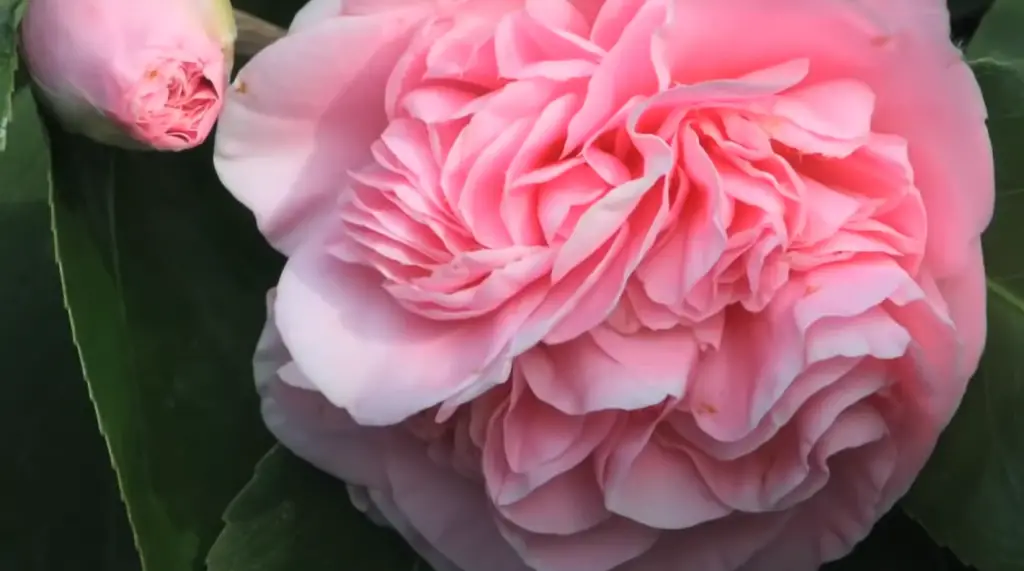
Camellias make excellent specimens for any garden, especially when planted in groupings to create a showy display. They can be used as hedges or borders, and they are great for shade gardens because of their ability to thrive in lower light conditions. The larger leaves also provide some much-needed cover from the sun’s rays during the hot summer months. If you’re looking for a plant with eye-catching blooms and impressive height, Camellia is definitely the way to go!
Camellia needs some shade
Camellias are known to love a bit of shade. If you have an area in your garden that doesn’t get much direct sunlight, Camellia would be the better choice for you. They will thrive with partial or dappled shade and still flower in winter. However, they do need some protection from strong winds which can damage the delicate petals on their flowers.
Camellia needs more water
If you’re looking for a low maintenance flower, then the Gardenia is definitely the way to go. It requires very little water and can survive in almost any type of soil. The Camellia, on the other hand, needs more water than the Gardenia to thrive – especially during dry spells or periods of extreme heat. If you live in an area with hot summers and dry winters, it might be best to opt for a Gardenia instead since it will require less watering than the Camellias typically need. Additionally, Camellias are usually more susceptible to disease due to their higher moisture requirement. On the plus side, they do provide gorgeous white flowers throughout the spring and summer months that make them popular among gardeners. All in all, the Gardenia is a better choice if you’re looking for something low maintenance while Camellias are more suited to those with more time and patience to take care of them.
Gardenia tolerates heat better
When it comes to gardening in warm climates, gardenias have an edge over camellias. Gardenias are more tolerant of heat than camellias and can handle temperatures up to the mid-90s without any trouble. This makes them a great choice for gardens in Southern states where temperatures regularly reach high levels during the summer months. On the other hand, camellias don’t fare so well in hot climates and may suffer from leaf scorch if not given enough shade or if exposed to direct sunlight for too long. So if you live somewhere with a lot of sun and heat, gardenia is definitely your best bet.
In addition to being able to tolerate higher temperatures, gardenias also require less maintenance than camellias. They need less pruning and don’t require regular fertilizing, making them a great choice for those who want a beautiful garden without spending too much time or energy taking care of it. On the other hand, camellias require frequent pruning and should be regularly fertilized to ensure healthy growth and flowering.
So if you’re looking for a low-maintenance plant that can tolerate hot weather, gardenia is your best bet. It’s an excellent choice for gardens in warm climates where temperatures often reach high levels during the summer months. Not only will it withstand the heat better than camellias but it also requires far less maintenance which makes it perfect for busy gardeners who want a beautiful garden without too much fuss.
Camellia has way more cultivars
Camellias come in hundreds of varieties, from evergreen to deciduous to shrub or tree-form, with single or double flowers in an array of colors and shapes. Some Camellia species can be found with pink, red, white and variegated blooms depending on the cultivar chosen. On the other hand, Gardenia generally only has a few cultivars available. You’ll find mostly white and yellow options for this type of flower. [2]
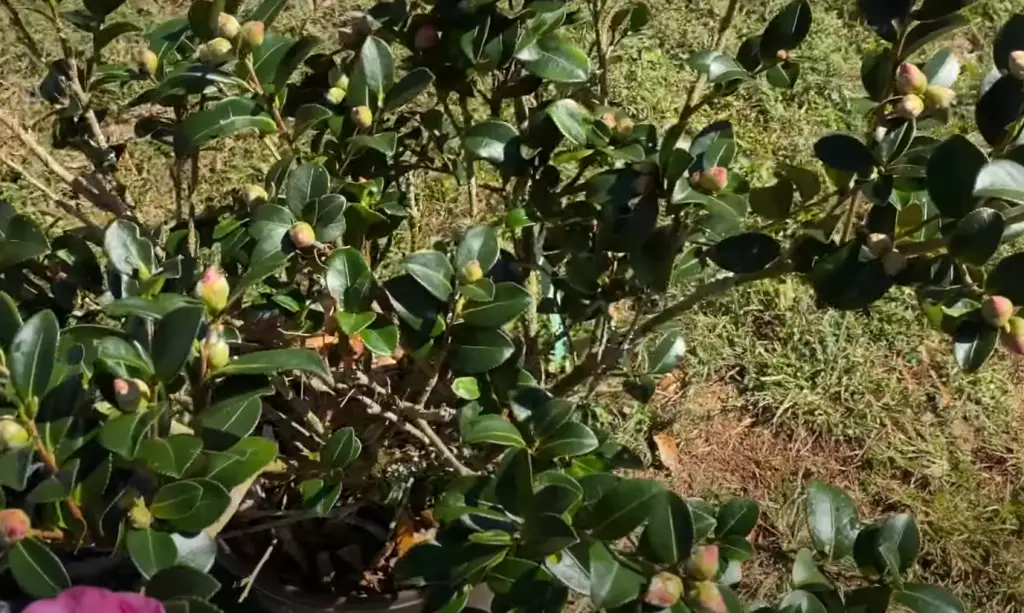
When it comes to seasonal changes affecting blooms, there is a difference between Camellias and Gardenias as well. While both flowers tend to bloom most heavily during warm weather months such as spring and summer, some Camellia varieties are known for blooming as late as December. Gardenias, on the other hand, tend to have more trouble with blooms in cold weather and may not flower very much during winter months.
Overall, if you’re looking for variety when it comes to color and type of flower, Camellia might be a better choice than Gardenia.
Ultimately, choosing between these two flowers will depend largely on your specific needs and preferences when it comes to gardening style and climate conditions. No matter which one you choose though, you can rest assured that both Gardenia and Camellia will add beauty and color to your garden!
FAQ
What is the difference between gardenia and camellia?
The main differences between gardenias and camellias are their size, flower type, and color. Gardenias have white blossoms with a beautiful scent and typically stay smaller than their camellia counterparts. They also tend to produce more flowers per plant on average. Camellias, however, can come in a variety of colors from white to pink, red or even yellow. The blooms are usually larger than those of gardenias too.
Is Gardenia a good plant?
Gardenia is an evergreen shrub with glossy dark green leaves and fragrant white or yellowish-white blossoms. It grows best in humid climates, but can also be grown indoors if given the right care. Gardenias are popular for their intoxicating scent, which has made them a favorite for flower arrangements and perfumes. They make excellent additions to any garden, adding a pleasant fragrance and lush foliage. Just remember that they require plenty of sun and water to thrive! While gardenias prefer acidic soils, they can tolerate slightly alkaline conditions as well. With proper care and maintenance, gardenias will bring beauty and joy to your garden for years to come. [3]
Is Camellia a good plant?
Yes, Camellia is a great plant for your garden and one that’s well-suited to many climates. It produces beautiful blooms in the spring and fall seasons, making it a good choice if you’re looking for an evergreen shrub with year-round visual interest. The leaves of Camellia plants are glossy and lush, giving any garden or landscape additional texture. Depending on the variety you choose, flower colors range from white to pink to red. [4]
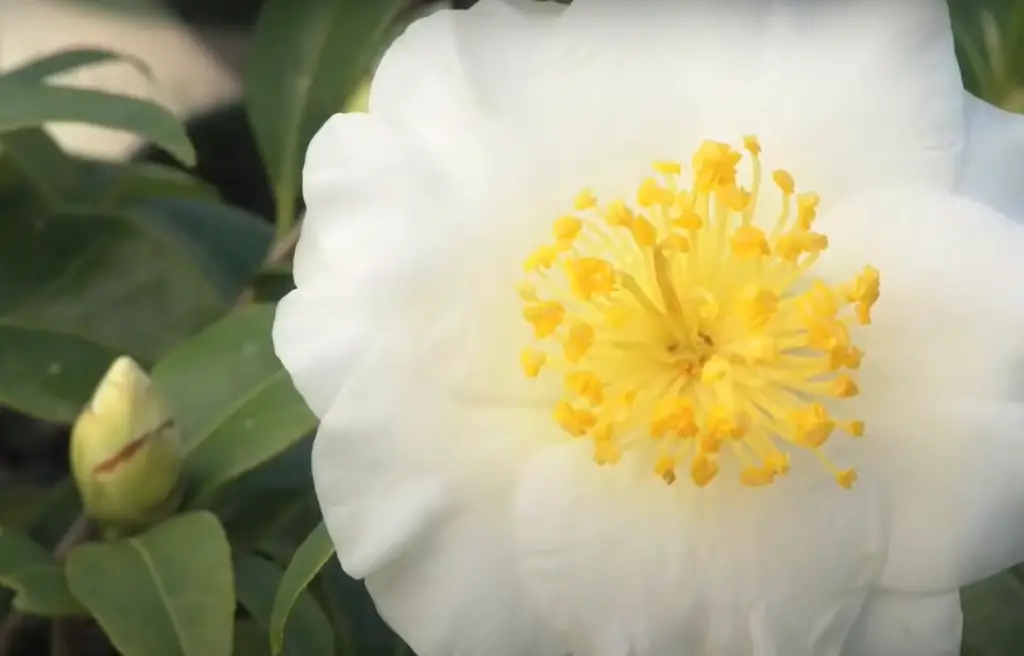
Camellias also have low maintenance needs once they’re established. They should be planted in partial shade or full sun where temperatures don’t drop below 15 degrees Fahrenheit ( -9 Celcius). You may need to give them some extra water during the summer months, but otherwise, they’re a hardy plant and provide interest in any garden.
What are the cons of Gardenia?
Gardenias can be a bit more demanding than camellias when it comes to care. Gardenias tend to require a lot of water and regular pruning, as well as the right soil mixture and fertilization. They are also prone to pests such as aphids, spider mites, and scale insects, so you may need to take extra steps to protect your gardenia from these threats. Additionally, gardenias don’t do very well in cold temperatures, so if you live in an area with colder winters, they may not survive for long. Finally, they have a short blooming season that usually only lasts from midsummer to early fall. [5]
Useful Video: Everything you need to know about Camellia Shrubs
Conclusion
In conclusion, both Gardenia and Camellia plants are excellent choices for gardens – it all depends on what you’re looking for! While the Gardenia has a gorgeous scent and delicate blooms, Camellias have a longer flowering season. If you’re after an evergreen shrub that will last your garden all year round, then Camellia is probably your best option. But if you want something with beautiful blooms and a strong fragrance, then Gardenia might be the choice for you! Whichever one you choose, make sure to do your research so that you can give these plants the care they need to flourish in your own garden. Happy gardening!
References:
- https://a-z-animals.com/blog/gardenia-vs-camellia-key-differences/
- https://worldofgardenplants.com/gardenia-vs-camellia/
- https://www.gardenia.net/guide/learn-how-to-grow-and-care-for-your-gardenia
- https://www.gardenia.net/guide/learn-how-to-plant-and-care-for-your-camellia
- https://blog.gardeningknowhow.com/top-10-qa/top-10-questions-about-gardenias/





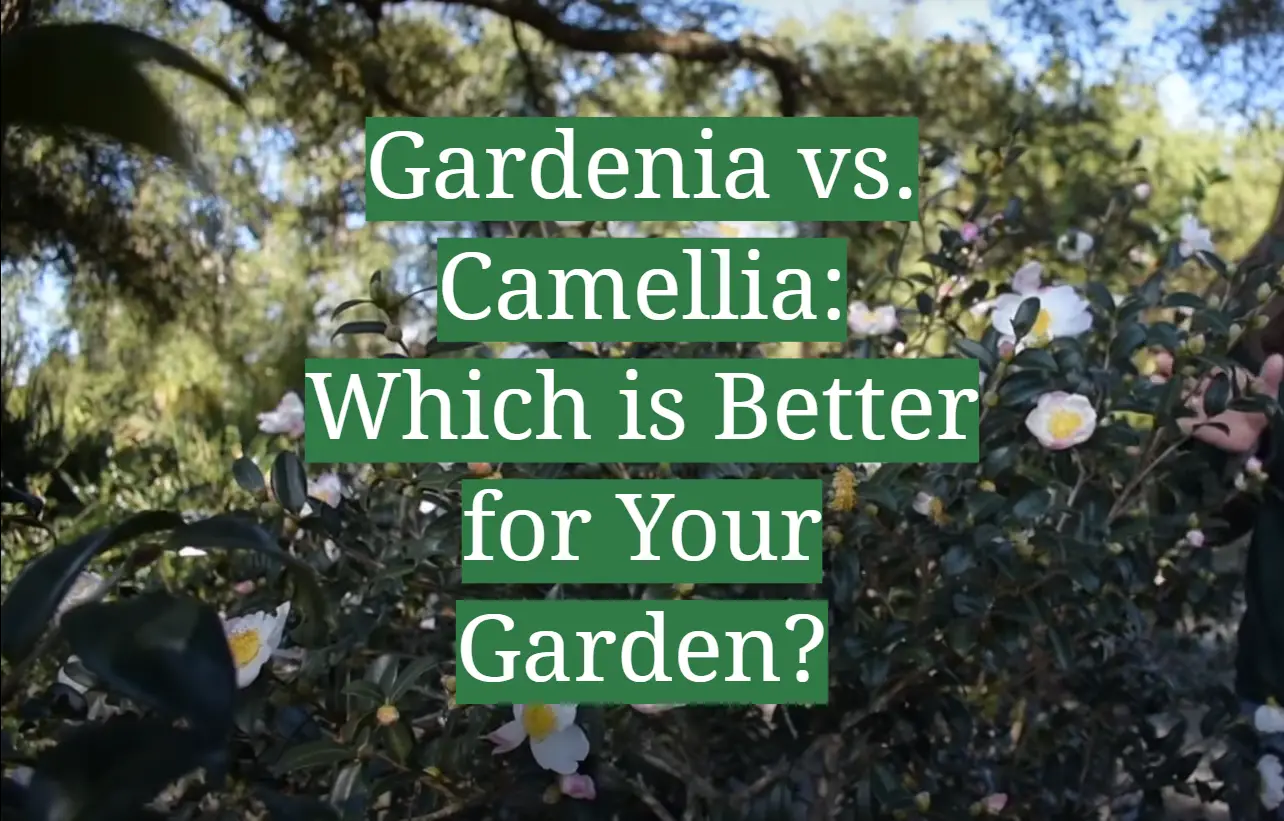

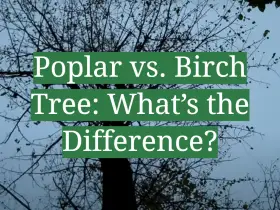

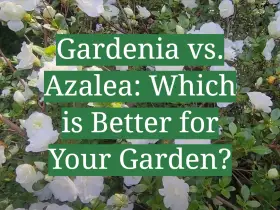
Leave a Reply
View Comments